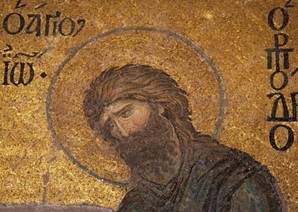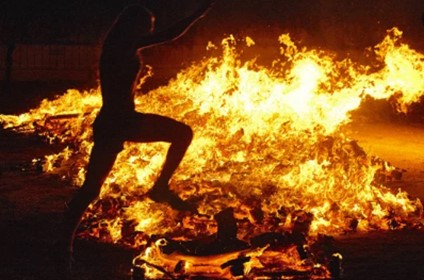
Summer is a special time for everyone, whether it's because of the start of the warm weather, the lengthening of the days or the long-awaited month of the summer holidays that we all take advantage of to spend a bit more time with family and friends. It's a time when patron saint festivals are celebrated in towns in honour of saints like Saint James, Saint Anne, Saint Joachim, Saint Lawrence, Our Lady of Mount Carmel, Saint Roch or Saint Augustine. To celebrate them, people who have moved to the city go back to their hometowns, where, even if they were not born there themselves, their parents, grandparents and other ancestors were born.
Among the most important summer celebrations, the Night of San Juan (Saint John's Eve) stands out. This festival is celebrated in almost the whole of Spain and in many places in Europe. It is the shortest night of the year, as it takes place just two days after the summer solstice in the northern hemisphere. In fact, despite this small difference, it is on the night of 23-24 June when we celebrate the solstice, which marks the arrival of summer and is the shortest night of the year until the next summer. There are many ways to spend the night, but before we get into the celebration, let's take a look at its origins.
 There are many factors that make the Night of San Juan deeply rooted in European tradition. It is mainly a pre-Roman festival that the church adapted into its calendar of festivals, which is usually called syncretism. According to Christian tradition, St. John the Baptist, who was Jesus' cousin and baptised him, was born six months before him (24 December). John the Baptist's father, Zechariah, lit a fire on the night of his birth to celebrate, which is why firewood is burned in many places where this festival takes place.
There are many factors that make the Night of San Juan deeply rooted in European tradition. It is mainly a pre-Roman festival that the church adapted into its calendar of festivals, which is usually called syncretism. According to Christian tradition, St. John the Baptist, who was Jesus' cousin and baptised him, was born six months before him (24 December). John the Baptist's father, Zechariah, lit a fire on the night of his birth to celebrate, which is why firewood is burned in many places where this festival takes place.
However, it seems that this custom dates back to earlier times as before the Romans and, possibly, since prehistory, these fires were already being made to commemorate the arrival of summer and worship the sun. These fires were intended to give more strength to the sun and also honour it, as it became the focus of the days at the expense of the night - the shortest of the year - and allowed people to have better weather and more time to get things done. It is also said that the fires marked the end of the harvest and prepared the land for new crops.
In any case, the arrival of summer is a more than a good enough excuse to meet up with family and friends, whether around a table or a bonfire and that is what is done in most Spanish towns and cities. Among these celebrations, one of the most famous is the Hogueras de San Juan (Bonfires of Saint John) in Alicante, where large monuments similar to the Fallas in Valencia decorate the streets and squares, accompanied by music, gunpowder, street parties and a lot of fun. In Valencia, we usually go to La Malvarrosa beach, carrying firewood, cardboard and paper to light our bonfires and eat by firelight.
After dinner and some drinks, we jump over the fire to purify ourselves for the new summer period. Some jump over it seven times, supposedly for the remaining six months of the year and the rest of June so that they will go well. Others do the same, but jumping in the sea seven or nine times to eliminate negative energy and have good health. Anyway, jumping over a bonfire and the waves is what everyone who goes to La Malvarrosa usually does on this special night.
If you are in Valencia and go to the beach to celebrate this magical night, remember to pick up all your rubbish, make sure you don't lose sight of your belongings and don't drink too much because it is one of the nights when the burn section of the hospital is the busiest.
And I only have to add...
enjoy San Juan and have a great summer!
















